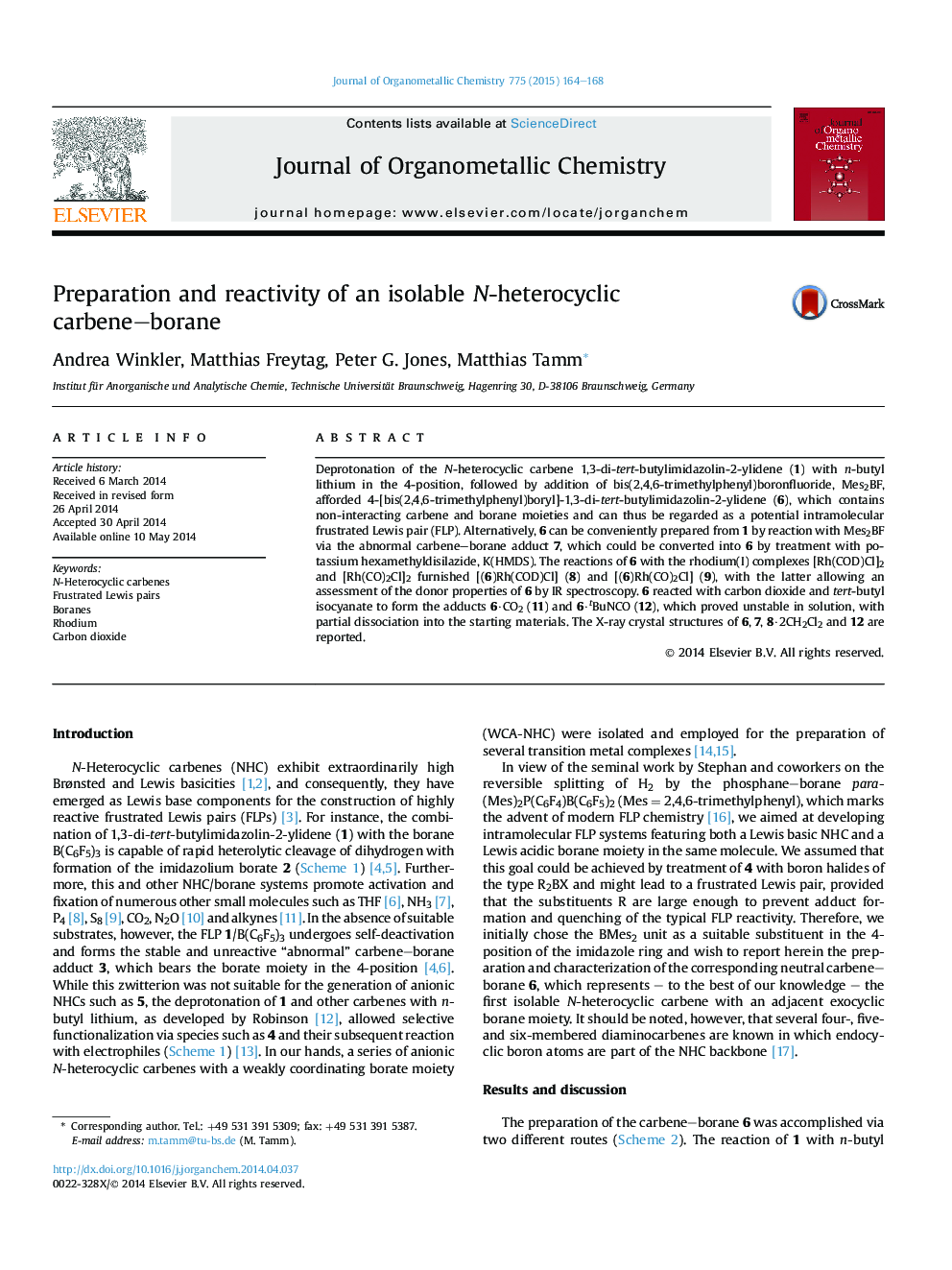| Article ID | Journal | Published Year | Pages | File Type |
|---|---|---|---|---|
| 1322207 | Journal of Organometallic Chemistry | 2015 | 5 Pages |
•An N-heterocyclic carbene–borane was prepared and structurally characterized.•Rhodium(I) complexes of an N-heterocyclic carbene–borane were prepared.•Carbon dioxide fixation with an N-heterocyclic carbene–borane was achieved.
Deprotonation of the N-heterocyclic carbene 1,3-di-tert-butylimidazolin-2-ylidene (1) with n-butyl lithium in the 4-position, followed by addition of bis(2,4,6-trimethylphenyl)boronfluoride, Mes2BF, afforded 4-[bis(2,4,6-trimethylphenyl)boryl]-1,3-di-tert-butylimidazolin-2-ylidene (6), which contains non-interacting carbene and borane moieties and can thus be regarded as a potential intramolecular frustrated Lewis pair (FLP). Alternatively, 6 can be conveniently prepared from 1 by reaction with Mes2BF via the abnormal carbene–borane adduct 7, which could be converted into 6 by treatment with potassium hexamethyldisilazide, K(HMDS). The reactions of 6 with the rhodium(I) complexes [Rh(COD)Cl]2 and [Rh(CO)2Cl]2 furnished [(6)Rh(COD)Cl] (8) and [(6)Rh(CO)2Cl] (9), with the latter allowing an assessment of the donor properties of 6 by IR spectroscopy. 6 reacted with carbon dioxide and tert-butyl isocyanate to form the adducts 6·CO2 (11) and 6·tBuNCO (12), which proved unstable in solution, with partial dissociation into the starting materials. The X-ray crystal structures of 6, 7, 8·2CH2Cl2 and 12 are reported.
Graphical abstractAn N-heterocyclic carbene–borane was isolated and structurally characterized, which can be regarded as a frustrated Lewis pair (FLP) with the sterically demanding substituents at the boron and at the imidazole nitrogen atoms preventing inter- and intramolecular interaction and Lewis acid–base adduct formation.Figure optionsDownload full-size imageDownload as PowerPoint slide
